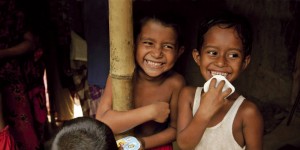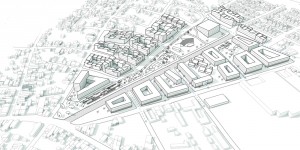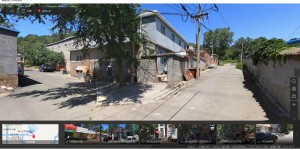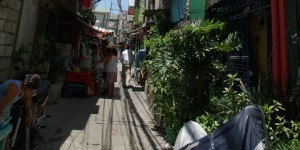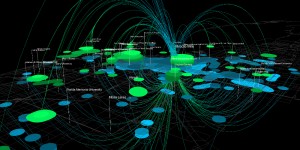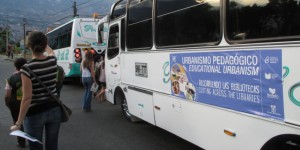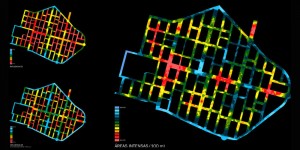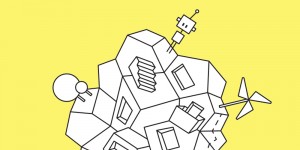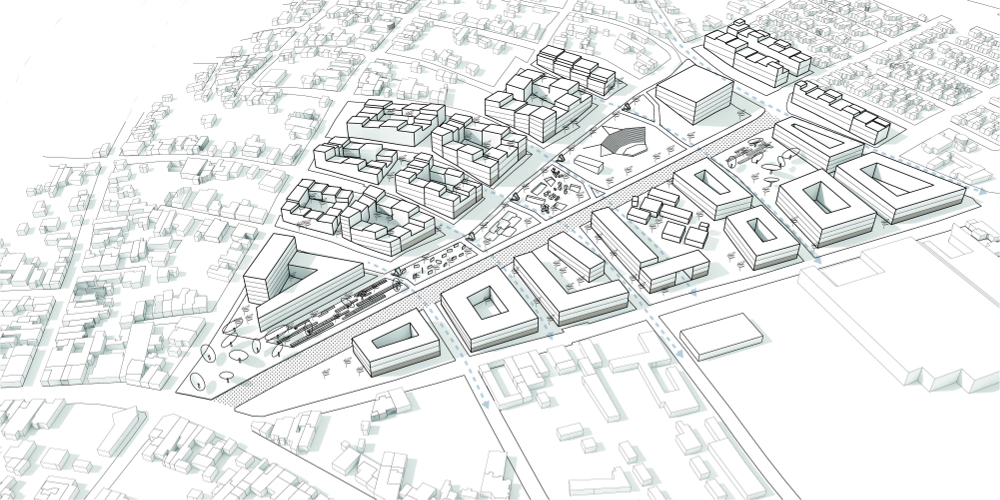
The Habitat 21 exhibition considers the process of urbanization going on worldwide. Due to the social, economic and ecological facts and circumstances of the 21st century, cities no longer emerge and develop today only—as was previously the case—on the basis of their socio-geographic position. Habitat 21 focuses primarily on the efforts of urban planners worldwide to deal creatively with these framework conditions and create urban habitats that are sustainable in every respect. Ars Electronica shows several examples of the challenges they have to surmount in going about this and the clever solutions they’ve been coming up with—for instance, reconstruction of Nepalese cities devastated by an earthquake, and water & sewage infrastructure in Peking.
Beyond Survival
Lukas Maximilian Hüller (AT), Kilian Kleinschmidt (DE), Robert Pöcksteiner (AT),
Hannes Seebacher (AT)
POST CITY, Bunker
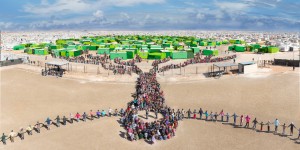
Beyond Survival records the realities of everyday life in a refugee camp—in this case, Al Zaatari in Jordan—and represents an effort to find new ways to deal with such modern-day mass migration. 60,000 children live in Al Zaatari, the world’s third-largest refugee camp with a total population of 100,000. Here, Hüller and Seebacher encountered children going through an extreme situation—life in a refugee camp—and got them involved in a photography project designed to underscore human beings’ inherent worth and dignity and to employ art as a means of survival.
That hopelessness isn’t all that prevails in this extreme situation is demonstrated by
Snapshots in Time, a documentary by filmmaker Robert Pöcksteiner (AT). It reports—without commentary—how these people, mortally afraid, fled from neighboring Syria, and how they now deal with their fate and pass the time each day. It’s also an account of the words and deeds of Kilian Kleinschmidt, the UN representative who had previously been in charge of this refugee city, and a man totally committed to making it a place fit for human beings under these precarious circumstances.
After the Desaster
Ars Electronica Solutions (AT), The Grameen Creative Lab, Ingenieure ohne Grenzen Österreich (AT)/Engineers without Borders Austria (AT)
While the earthquakes in Nepal represent a deeply tragic event in a politically and economically vulnerable nation, the opportunity of reconstructing rural areas in a sustainable manner to improve livelihoods arises. Based on an ecovillage approach, the villages can be rebuilt more socially, economically and ecologically sustainable.
Social Business
The Grameen Creative Lab (DE)
Unlike traditional business, a social business operates for the benefit of addressing social needs that enable societies to function more efficiently. Muhammad Yunus has already shown the effectiveness of this new type of business: his clear focus on eradicating extreme poverty combined with his condition of economic sustainability has created numerous models with incredible growth potential.
Urban Design Laboratory
Technical Universitäy Vienna (AT),
Inter-American Development Bank IDB (US)
The
Urban Design Laboratory (UDL) is an experimental design methodology combining people-centered planning, participatory planning tools, urban strategies and urban design.The leading elements of UDL are the people and the information they have about a specific, complex and local situation. Planners moderate and design sustainable new neighborhoods, revive abandoned areas, extend cites and design urban regeneration projects. In local workshops, local key actors and the community elaborate together planning visions, scenarios and urban strategies, which are developed further by the UDL designers.
Read more about this on the
Ars Electronica Blog!
Urbanization as Desaster
CityIF (CN)
Urban disaster, born of rapid urbanization and resulting from the inter-reaction between the built environment (buildings, roads) and grown environment (climate, ecology and society), is generating
new and mixed urban landscapes. This is exemplified in Beijing, which, despite the rain and water deficiency, is frequently flooded due to the city’s faulty, antiquated water infrastructure and microclimate change in the region, and in the evolution of habitats due to the many urban migrant workers, who survive by living in neighborhoods between urban and rural areas and working unofficially. How can we “capture” and include them in passive/active participatory data mapping? On the bright side, will it inspire the idea of future urban habitats?
sensing place/placing sense 3: improvising infrastructure
Dietmar Offenhuber (AT), Katja Schechtner (AT)
This year’s instance of the sensing place/placing sense series investigates the pockets of informality inside the formal urban systems that structure our daily lives. Not only in the megacities of the Global South, life is characterized by a constant struggle with infrastructure. The electricity grid, logistics and supply chains, transportation—every system that is centrally planned and managed from above always requires some level of improvisation and tinkering from below in order to make the system work for its users.
Semantic Landscapes
Habidatum (RU), Mathrioshka (RU)
The city is not only the conglomerate of buildings and roads, jobs and homes and people moving in between—it is an interconnected environment constructed by the interactions of people with people
and with physical objects. What if we could unveil the invisible virtual city? What if we could explore its relation with the “actual” one we got used to seeing and dealing with? Habidatum http://www.habidatum.com (RU) presents a set of projects that approaches these questions and allow to explore the mental geography of Moscow, the emotions of tourists and locals in Barcelona, and the connections of Miracle Mile in South Miami with other urban areas via Twitter discussions.
Educational Urbanism
Ian Banerjee (Vienna University of Technology/AT/IN)
India in the meantime a made another big step forward. In January 2015, a major new national program called Make in India was presented to the international community. It is designed to transform India into a global manufacturing hub. This new program is inextricably connected with last year’s program of creating 100 Smart Cities for India. India has truly woken up to urban planning in a big way. Never in the country’s history, has urban planning been so en vogue as it is now!
Citythinking—WHY IS MORE
Eddea Arquitectura y Urbanismo (ES), [tp3] architekten/architects (AT)
Eddea http://www.eddea.es (ES), Andreas Henter, Harald Schönegger ([tp3] architekten/AT)
Citythinking is an open organization to display, rethink and adapt territorial organizations, linking economy, society and environment. For the group, the city is a superposition of simultaneous events, a strained network that links these three areas. WHY IS MORE is the question that is linked directly to the theme of development processes. Each adaptive change is accompanied by a categorical “why”. In nature, development tends towards perfection in order to be more efficient. But nothing is bigger, better or higher without a reason!
Superscape
JP architektur perspektiven (AT)
Superscape is a biennial Austrian architectural prize launched in 2014. Its mission is to spotlight innovative, visionary architectural concepts for the interplay of private and public spaces in an urban context. This year’s competition called for brilliant ideas to dovetail the two spheres under two specific conditions: the setting: Vienna; the utility horizon: the next 50 years.
The exhibition in PostCity showcases six designs that were shortlisted by the jury and then, at the invitation of JP architektur perspektiven, further developed by their creators. The spectrum ranges from small interventions in the public sphere to the development of elaborate, extensive new spatial structures.





